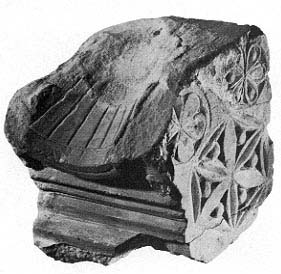Image Details

Courtesy Nahman Avigad/The Jewish Quarter Excavations
Never needs winding. A survivor of the destruction of Jerusalem in 70 C.E., this sundial still retains half of its original 12 radial segments, divided by incised lines. These segments on the concave dial once tracked the sun’s movement through the hours of the day by marking the progress of the shadow of a gnomon—an upright piece of metal—the stub of which remains embedded in the soft limestone at upper center. Discovered in a palatial mansion excavated in Jerusalem’s Jewish Quarter by Hebrew University professor Nahman Avigad, this portable sundial measures 4.75 inches long, 4 inches wide and 4.5 inches high. It was probably carried from the house to an outdoor courtyard and placed in a fixed position. Rosettes carved in bas-relief, closely resembling those found on Jewish limestone ossuaries of the Second Temple period, decorate one side of the sundial.
The innovation in the sundial introduced during the Hellenistic period was the division of the day—sunrise to sunset—into 12 equal hours whose length varied from season to season. The oldest recovered sundial of this kind dates to the third century B.C.E.
